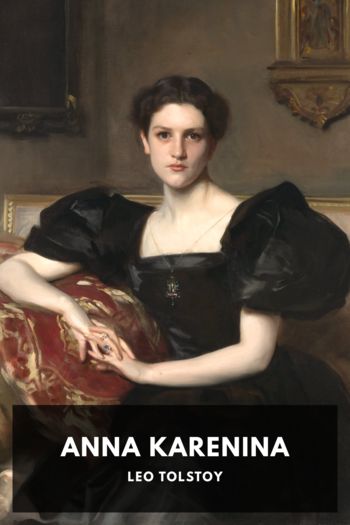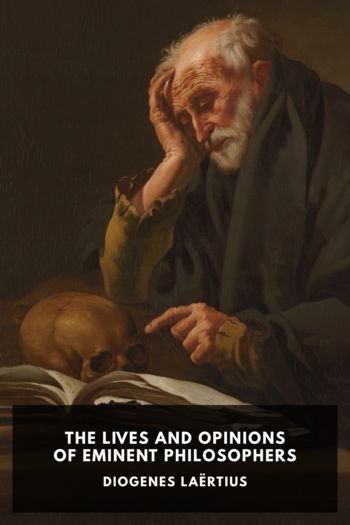Genre Other. Page - 286

Description
The Gods of Mars is Burroughs’ sequel to A Princess of Mars. After ten long years, John Carter is again transported to Mars to try and determine the fate of his wife Dejah Thoris, but finds himself in the forbidden Valley Dor, from which no man may return. Published serially in five parts between January and May 1913, this sequel appeared a year after the initial serialization of its predecessor. It was eventually published in its full novel form in 1918.
Although the Martian series contains ten books in total, the first three—of which The Gods of Mars is the second—are often considered a stand-alone trilogy. Throughout the series, Burroughs’ imagination and sense of adventure shine through, and his extravagant prose and innovative vocabulary raise the works up above run-of-the-mill pulp fiction.

Description
The Country of the Pointed Firs was first published in serial form in 1896 in The Atlantic, then later expanded into a novel.
The narrator, like Jewett, is a middle-aged female writer. She goes to the fictional coastal town of Dunnet Landing in Maine to find time and space to write. There she meets its residents, including her landlady, Mrs. Almira Todd, a widow and herbalist; she rents the empty schoolhouse as a place to write; and she sails with Mrs. Todd to meet Mrs. Todd’s brother and elderly mother. The Country of the Pointed Firs is not so much concerned with plot, but with place—its rhythms, its people and its language. It captures the isolation, community and languishing of a small town.
It is often described as Jewett’s finest work, and one of the most influential works of American literary regionalism. Willa Cather considered it one of the most enduring American literary works of all time.

Description
Anna Karenina is certainly somewhat unhappy in her life, but presents a strong and vivacious character when called in to smooth over a major crack that’s appeared in her brother’s marriage. Unfortunately, the very visit designed to help her brother introduces her to Count Alexei Vronsky and sets in motion a chain of events that will ripple through families and the unforgiving society of wealthy Moscow and St. Petersburg.
Initially serialized over five years in The Russian Messenger, Anna Karenina was first published as a two-volume novel in 1878. It was Leo Tolstoy’s second novel, coming after War and Peace and further cementing his role as the primary Russian author of his age. Tolstoy drew on his aristocratic upbringing to set the scene for the novel, and it’s widely believed that he wrote his own experiences and struggles with religion (documented in A Confession) into the central character of Konstantin Levin.
This edition compiles into a single volume the 1901 English translation by Constance Garnett.

Description
The Warlord of Mars begins after the previous installment in the Martian series abruptly ends: John Carter’s beloved princess Dejah Thoris has been imprisoned in the Temple of the Sun, whose rooms only revolve back to the entrance once every Barsoomian year. Now, Carter must mount a rescue to save the princess from certain doom.
The novel, a fast-paced and straightforward tale of swashbuckling adventure, is another solid entry in Burroughs’ “swords-and-planets” corpus. It was originally serialized in four parts in All-Story Magazine before being published as a novel in 1919.

Description
Like many of Hardy’s novels, The Mayor of Casterbridge is set in the fictional county of Wessex in the mid 1800s. It begins with Michael Henchard, a young hay-trusser, drunk on rum, auctioning off his wife and baby daughter at a village fair. The next day, overcome with remorse, Henchard resolves to turn his life around. When we meet Henchard eighteen years later, temperance and hard work have made him wealthy and respectable. However, he cannot escape his past. His secret guilt, his pride, and his impulsive temper all serve to sabotage his good name.
The Mayor of Casterbridge was published in 1886, first as a magazine serial and then later that year as a book. It is perhaps most noteworthy for the psychological portrait of Michael Henchard, a tragic character who remains sympathetic while simultaneously being deeply flawed. Typical of other Hardy novels, it also vividly depicts life in the rural countryside at that time.

Description
The Cream of the Jest is a later entry in James Branch Cabell’s Dom Manuel series. The series as a whole is a fantasy series, and this entry takes a philosophical turn: after the first few chapters of standard high-fantasy fare, the narrative pulls out to reveal the point of view of the narrative’s author, Felix Kennaston.
Kennaston life slowly starts to blur with his fantasy world. He finds himself constantly dreaming of Etarre, a mysterious, Beatrice-like figure; but every time he tries to touch her, he wakes up. Soon his neglected wife begins to blur in to Etarre, and his increasingly-philosophical dream worlds begin to become less distinguishable from his day-to-day life.
Though The Cream of the Jest is a kind of capstone to a larger fantasy series, the book itself feels more like philosophy than fantasy. Kennaston’s journeys through his dream worlds explore a series of thoughtful threads, from the interface of thought and reality, to the power of religion, to the human condition.

Description
The Scarlet Letter was published in 1850; it was one of the first books to be mass-produced in America, which helped ensure its immediate popularity and ubiquitous presence on contemporary shelves. Its first printing of 2,500 books sold out in ten days.
The novel is set in the Puritan Massachusetts Bay Colony between the years 1642 and 1649. Hester Prynne has had a child out of wedlock, and its father is a mystery. For her sin, she is made to wear an embroidered scarlet A on her clothes—for “Adulteress.” She now faces a life of unending shame in the stern and religious Puritan colony, in a part of the world where there are no others to turn to.
While the plot is simple, the novel is highly allegorical. It explores themes of sin, guilt, repentance, forgiveness, alienation, and legalism. Characters have symbolic names and appearances, and many aspects of the narrative can be viewed in a symbolist lens.
Hawthorne initially thought the novel was too short for publication on its own; to pad the length, he included the “Customhouse” introduction. The introduction angered the residents of Salem, who thought the introduction was poking mean-spirited fun at them. This prompted Hawthorne to republish the book “without the change of a word,” but with a reassurance that the introduction was meant in good spirits.
The novel has been consistently popular since its publication, with it being required reading in many American high schools. D. H. Lawrence called it “a perfect work of American imagination.”

Description
The Beetle was published in 1897, the same year as Dracula—and outsold it six to one that year. Like Dracula, the novel is steeped in the evil mysteries of an ancient horror: in this case, a mysterious ancient Egyptian creature bent on revenge.
The story is told through the sequential points of view of a group of middle-class Victorians who find themselves enmeshed in the creature’s plot. The creature, in the guise of an Egyptian man, appears in London seeking revenge against a popular member of Parliament. They soon find out that it can shape shift into other things, including women; that it can control minds and use hypnosis; and that it won’t stop at anything to get the revenge it seeks. The heroes are soon caught in a whirlwind of chase scenes, underground laboratories, secret cults, and more as they race to foil the creature.
While The Beetle didn’t earn the lasting popularity of Stoker’s counterpart, it remains a strange and unique morsel of Victorian sensationalist fiction.

Description
The Pilgrim’s Progress from This World, to That Which Is to Come was written in 1678 by John Bunyan, a Puritan and a dissenter from the Church of England. It is an allegory of the journey to redemption of the faithful, through many snares and difficulties. Cast in the form of a dream, the first part of the work deals with a man called Christian, who sets off carrying a great burden. He meets many helpers and many adversaries on this journey. The second part of the work deals with Christian’s wife, Christiana, and her four children, who follow a similar journey.
One of the most influential of all religious works, The Pilgrim’s Progress was immediately popular and has been translated over the years into many languages and into many forms, including verse, opera, movies, and many illustrated versions for children. Several of its story elements, characters and locations have entered the language, such as the “Slough of Despond,” “Vanity Fair,” “Great-heart,” and “Giant Despair.”
This edition is based on a version of Bunyan’s complete works edited by George Offor and published in 1855. It contains many endnotes drawn from a variety of commentators.

Description
These brief biographies of more than eighty philosophers of ancient Greece were assembled by Diogenes Laërtius in the early third century. He based these on a variety of sources that have since been lost. Because of this, his biographies have become an invaluable source of information on the development of ancient Greek philosophy, and on ancient Greek culture in general. Most of what we know about the lives and otherwise lost doctrines of Zeno the Stoic and Diogenes the Cynic, for example, come from what Diogenes Laërtius preserved in this book. Mourning what else we have lost, Montaigne wrote: “I am very sorry we have not a dozen Laërtii.”
Steamy romance, barbed humor, wicked cattiness, tender acts of humanity, jealous feuds, terrible puns, sophistical paradoxes, deathbed deceptions, forgery, and political intrigue … while the philosophers of ancient Greece were developing their remarkable and penetrating philosophies, they were also leading strange and varied lives—at times living out their principles in practice, at other times seeming to defy all principle.
Diogenes Laërtius collected as much biographical information as he could find about these ancient sages, and tried to sift through the sometimes contradictory accounts to find the true story. He shares with us anecdotes and witty remarks and biographical details that reveal the people behind the philosophies, and frequently adds a brief poem of his own construction that comments sardonically on how each philosopher died.